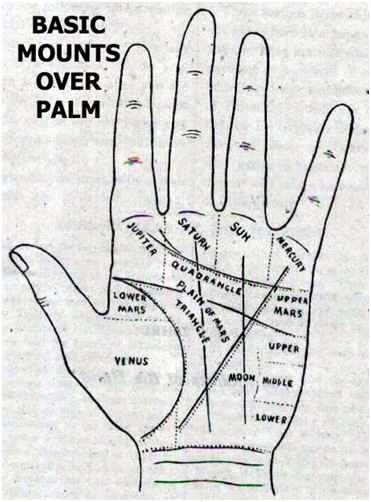PALMISTRY
We will provide plamistry services. Here detailed information about palmistry.
Palmistry, also known as chiromancy or hand reading, is a pseudoscientific practice that claims to interpret a person's character, personality, and predict their future by analyzing the lines, shapes, and features of their hands.
Here's a more detailed look at palmistry:
Key Aspects of Palmistry:
• Interpretation of Lines and Features:
Palmistry involves interpreting the lines, mounts (areas between fingers), and other features on the palm to draw conclusions about a person's personality, character, and potential future events.
• Cultural Variations:
Palmistry is practiced in various cultures around the world, each with its own interpretations and traditions.
• Pseudoscience:
Palmistry is widely viewed as a pseudoscience due to the lack of scientific evidence supporting its claims and the inconsistencies in interpretations across different palmistry traditions.
• Origins:
The origins of palmistry are uncertain, but it is believed to have originated in ancient India and spread throughout the Eurasian landmass.
• Different Lines and Their Interpretations:
• Life Line: Often interpreted as a representation of a person's vitality and general health.
• Head Line: Thought to indicate a person's mental abilities, intelligence, and thinking style.
• Heart Line: Believed to represent a person's emotional nature and relationships.
• Marriage Line: Often interpreted as indicating a person's marriage or relationships.
• Other Lines: Other lines, such as the fate line, sun line, and money line, are also interpreted in various ways.
• Hand Shapes and Mounts:
The shape of the hand, the size and shape of the fingers, and the mounts are also considered in palmistry.
• Hand Reading:
Palm readers, also known as palmists, hand readers, or chirologists, are those who practice palmistry.
Key Aspects of Palmistry:
• Interpretation of Lines and Features:
Palmistry involves interpreting the lines, mounts (areas between fingers), and other features on the palm to draw conclusions about a person's personality, character, and potential future events.
• Cultural Variations:
Palmistry is practiced in various cultures around the world, each with its own interpretations and traditions.
• Pseudoscience:
Palmistry is widely viewed as a pseudoscience due to the lack of scientific evidence supporting its claims and the inconsistencies in interpretations across different palmistry traditions.
• Origins:
The origins of palmistry are uncertain, but it is believed to have originated in ancient India and spread throughout the Eurasian landmass.
• Different Lines and Their Interpretations:
• Life Line: Often interpreted as a representation of a person's vitality and general health.
• Head Line: Thought to indicate a person's mental abilities, intelligence, and thinking style.
• Heart Line: Believed to represent a person's emotional nature and relationships.
• Marriage Line: Often interpreted as indicating a person's marriage or relationships.
• Other Lines: Other lines, such as the fate line, sun line, and money line, are also interpreted in various ways.
• Hand Shapes and Mounts:
The shape of the hand, the size and shape of the fingers, and the mounts are also considered in palmistry.
• Hand Reading:
Palm readers, also known as palmists, hand readers, or chirologists, are those who practice palmistry.

 +91-98492 26304
+91-98492 26304 

